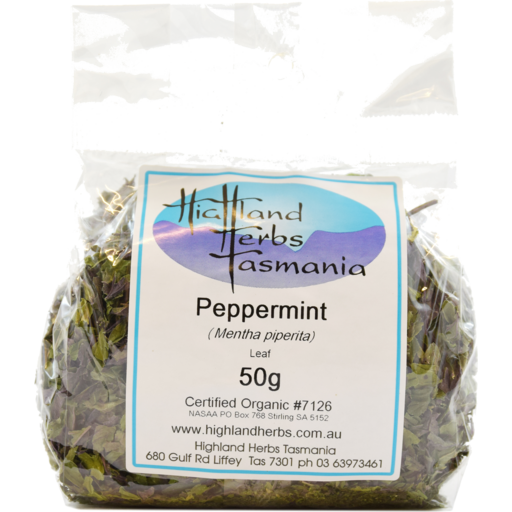Description
Plant description:
Peppermint first appeared in England about 300 years ago as a naturally occurring hybrid of Water Mint (Mentha aquatic) and Spearmint (Mentha spicata). Peppermint grows to 90 cm tall with square purple stems and branching tops. The leaves are green to purplish green, lanceolate to ovate-lanceolate, pointed with toothed edges. Flowers are mauve, occasionally white and borne at the top of the main stem. The plant forms rhizomes and dies back to the ground each winter.
Part used: Leaf.
Harvest: The plant should be harvested before flowering or before too many lower leaves discolour.
Active Constituents: Essential oil (mainly menthol, menthone and jasmone), flavonoids and tannins.
Energetics: Pungent, cooling.
Actions: Carminative, spasmolytic, antiemetic, diaphoretic, cholagogue, anti microbial, mild sedative, topically analgesic and antipruritic, mild sedative.
Uses: Peppermint has been traditionally used to settle digestive upsets including intestinal colic, flatulent dyspepsia, indigestion, nausea and vomiting, morning sickness, infantile colic, irritable bowel syndrome, morning sickness, gall bladder problems and even colitis. It is historically thought to be excellent for fevers especially associated with colds, flu, nasal catarrh and sinusitis. Topically it is useful as an inhalation for nasal catarrhal and applying the essential oil tought to useful in relieving the pain associated with tension headache, migraine, arthritis and neuralgia.
Dosage: Infusion – pour one cup of boiling water over one teaspoon of dried herb and drink after five minutes. Drink as often as desired. Fluid Extract (1:2) – 10—30ml/week.
Cautions: Gastro-oesophageal reflux.
Interactions: May reduce absorption of minerals, thiamine and alkaloids.
Certified organic Australian grown in Tasmania, by Highland Herbs Tasmania



